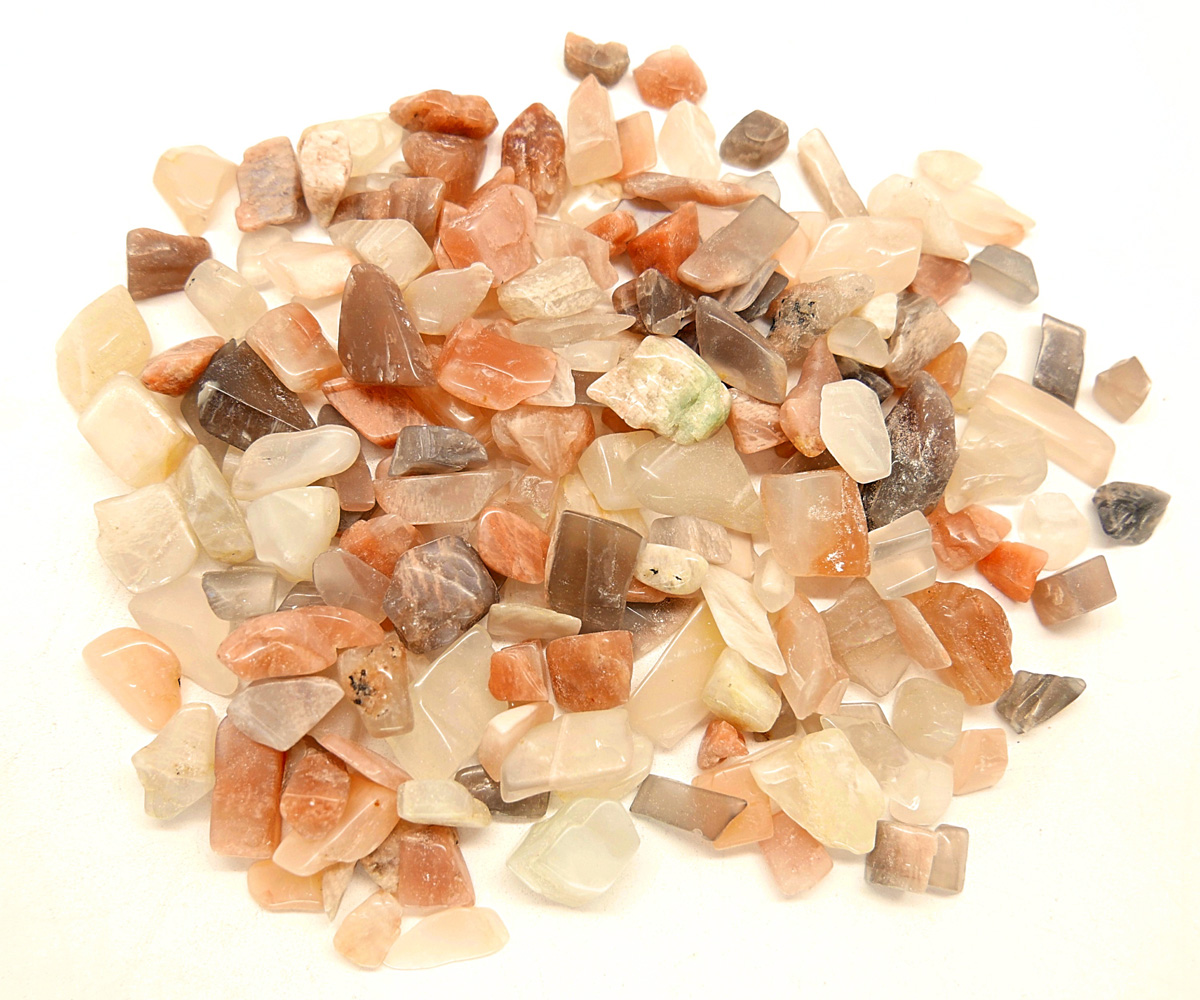
PHYSICAL PROPERTIES
- GROUP Silicates - tectosilicates
- COMPOSITION KAlSi3O8
- COLOR Colourless, white, pinkish yellow or reddish brown
- CRYSTALLINE SYSTEMMonoclinic / triclinic
- CRYSTALLINE HABIT Prismatic
- HARDNESS 6 - 6.5
- FRACTURE From conchoidal to unequal
- EXFOLIATION Perfect, good
- GLOSS Vitreous
- STRIP Colorless
- TRANSPARENCY From transparent to translucent
- SPECIFIC GRAVITY 2.5 - 2.6
MINERALOGICAL CHARACTERISTICS
The adularia belongs to the group of feldspars and is considered a superior variety of orthoclase. Its name refers to the Adular mountains, in Switzerland, where deposits of this mineral are found.
The adularia can be of shades of pink, gray, white, cream and yellow. It is found in hydrothermal veins and usually forms twins and can also appear in a massive, granular or cryptocrystalline form.
The adularia usually presents an iridescence on its surface called adularescence.
Deposits: Switzerland, Madagascar, India and Australia.
THERAPEUTIC PROPERTIES
The adularia moonstone has the same properties as the rainbow moonstone, both represent balance. They are of great help to calm and balance emotions and promote a state of peace and tranquility. Putting on the solar plexus or chi center helps to create this balance. The moonstone also represents the cyclical nature of the human being and favors emotional, mental and physical balance in the processes of inner growth.
It is considered a spiritual stone and enhances the Ying part of people, which Taoism defines as the feminine principle, that of intuition, receptivity and creativity from non-action. Promotes balance between masculine and feminine energies. The moonstone is also known to be beneficial for the female reproductive cycle, for ailments related to menstruation and to balance the hormonal system.


